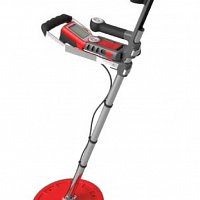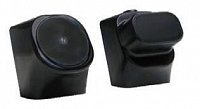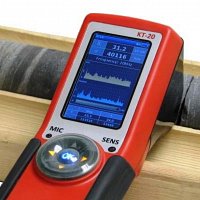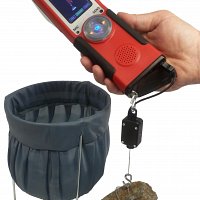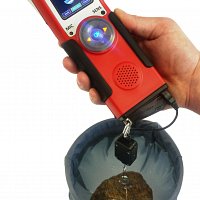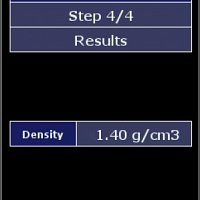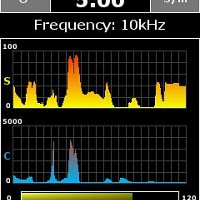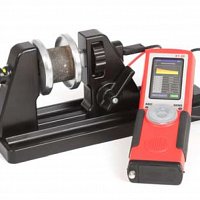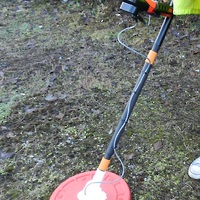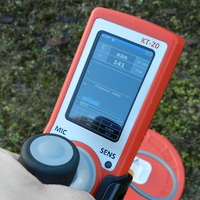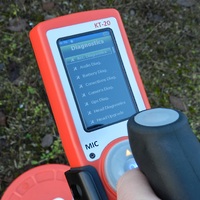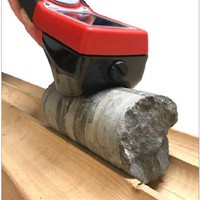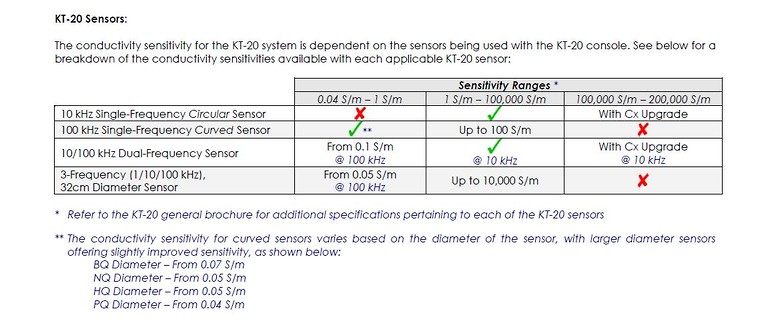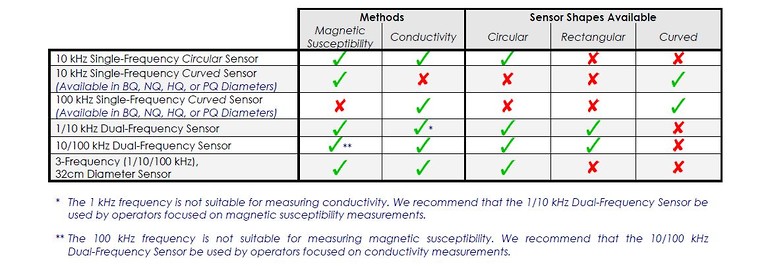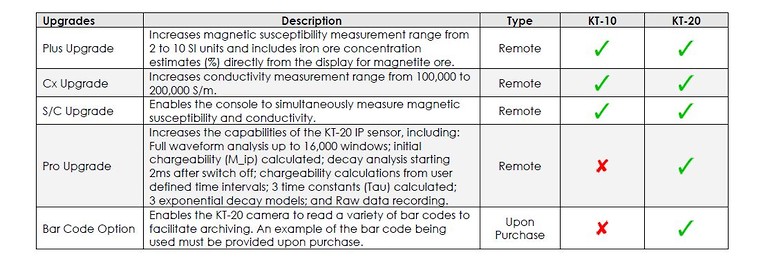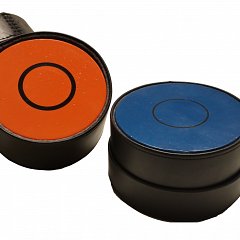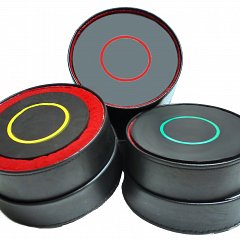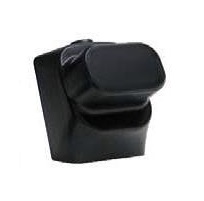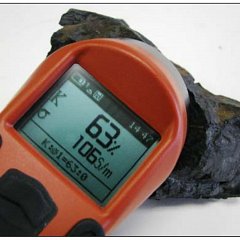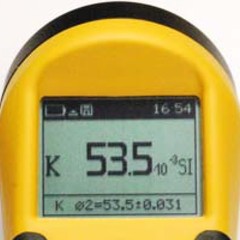KT20
from Terraplus
The KT-20 offers a complete handheld solution for mineral exploration, geological sampling, core logs or soil science. The instruments ability to record Magnetic Susceptibility, Conductivity/ Resistivity, Density, Induced Polarisation and Geospatial Position enables the Exploration Geophysicists to map and characterise samples effortlessly. The KT-20 supports a number of different sensors in order for the instrument to be optimised for a particular application. Both the coil shape and frequency can be varied by changing the sensor.
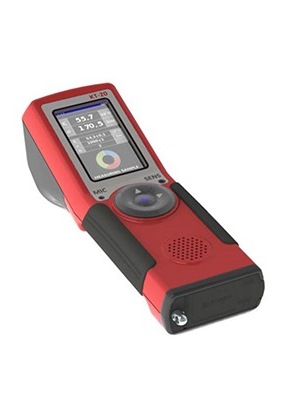
Each instrument is supplied with a pre-installed calibration curve. The conductivity calibration is based off a multi-point algorithm to ensure accurate measurements between inductive and galvanic methods. The magnetic susceptibility calibration curve is derrived from samples with containing various concentrations of magnetite, enabling the KT20 to calculate an estimated direct iron ore concentration (%). Alternatively operators are able to formulate and save their own calibration curves.
The KT-20’s unique design enables users to interchange between the circular, rectangular or large 3F-32 field coil on the fly. The circular sensor has a large surface area and is recommended for grassroots exploration and measuring samples larger than 66 mm. Conversely, the rectangular sensor is ideal for measuring cores with diameters smaller than 66 mm.
The KT-20 S/C is available with two dual-frequency sensors: 1/10 kHz or 10/100 kHz. Those focusing on magnetic susceptibility measurements will benefit from the 1/10 kHz sensor because the 10 kHz frequency provides a higher sensitivity, whilst the 1 kHz frequency reduces the influence of a sample’s conductive properties on the measurements, in addition to providing a greater depth penetration (although with a reduced sensitivity). The 10/100 kHz is advantageous for conductivity measurements because the 100 kHz frequency increases the meter’s sensitivity to 0.1 S/m, while the 10 kHz has a greater depth penetration (although with reduced sensitivity).
Coil Types
- 1/10 kHz Dual-Frequency Sensor (circular or rectangular designs)
- 10/100 kHz Dual-Frequency Sensor (circular or rectangular designs)
- 10 kHz Single-Frequency Circular Sensor (circular design only)
- 10 kHz Single-Frequency Curved Sensor for Magnetic Susceptibility Measurements (available only in dedicated BQ, NQ, HQ and PQ diameters)
The 3F‐32 sensor has a 32 cm diameter and features three frequencies that have been carefully selected to provide certain benefits for magnetic susceptibility and conductivity measurements. The 3F‐32 sensor is equipped with a telescopic pole and arm support enabling users to easily and comfortably take measurements while standing or walking. The KT‐20 with 3F‐32 sensor is an ideal instrument for field research. It can take a single measurement at a specific location, or continuously collect data to map an entire area. A GPS receiver is integrated into the KT‐20 console to provide location coordinates with the data. It also has a built‐in high resolution digital camera to visually document any sample of interest.
Induced Polarisation measurements require the samples to be placed sample holder similar to a vice. The device is portable so samples can be processed and measured at base camp. The IP/Resistivity sensor can be supplied as a Standard and Pro model.
The Standard model calculates total chargeability (M_x) using two methods: 20 windows and Mx fit. The first measures total chargeability using the traditional 20 windows method. The second, Mx Fit, is an algorithm that measures total chargeability using several thousand windows instead of 20. The benefit of Mx fit is that it provides increased accuracy and confidence in the measurements.
The Pro model enables the user to analyse decay curves with up to 16,000 data points for any measurement time. Through these data points the decay curve is studied to calculate total chargeability (M_x) and initial chargeability (M_ip). Users can also customise their own chargeability windows (M_x_user) and time periods (t1 and t2). Furthermore, an extra early delay time (as fast as 2 ms after turn-off) allows the Pro model to collect data much earlier than before, providing users with new capabilities to improve their interpretation. The KT-20 IP Pro model includes all of the same capabilities as the Standard model.
Product Dimensions
| Physical | Dimensions (L x W x H) | Weight |
|---|---|---|
| KT20 (instrument only) | 26cm x 7.2cm x 6cm | 0.35kg |
Technical Specifications
| Memory: | 4 GB: 4,000 Total Records Stored. |
|---|---|
| Control: | 5-Button Control with LED Illumination. |
| Data Input/Output: | USB and Bluetooth. |
| Power Supply: | 2 x Li-Ion Rechargeable Batteries. |
| Operating Frequnecy: | 1kHz and 10KHz Dual Frequncy Sensor. or 10kHz and 100KHz Dual Frequncy Sensor. Single frequncy sensors are also available. |
| Operating Temperature: | -20°C to 60 °C. |
| Sensors: | Rectangular, Circular or large 32cm coil. |
| Transreflective Colour Display Dimensions: | 76 x 47 mm |
| Transreflective Colour Display Resolution: | 400 x 240 pixels |
| Circular Sensor Dimensions: | 6.6cm |
| Rectangular Sensor Dimensions: | 6.6 (L) x 3.2 (W) cm |
| 3F-32 Ground Sensor Dimensions: | 32cm |
| Rating: | Rating: IP65 |
| Internal GPS Accuracy: | 2.0m |
| Internal GPS Receiver Satellite Accessibility: | SBAS (WAAS, EGNOS, MSAS). |
| Built-in Camera: | 2 Mega Pixels. |
| GeoView PC Software: | Supports all Windows 32 or 64 bit operating systems. |
| GeoVision App: | Android operating system (OS) must be version 2.3.3 or higher. |
Data Sheet
- KT20 Datasheet (PDF)
Literature
Checklists
- Checklist for Data Storage and Transfer (PDF 249KB)
- Checklist for Instrument Storage (PDF 138KB)

